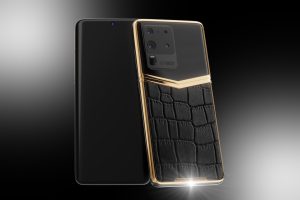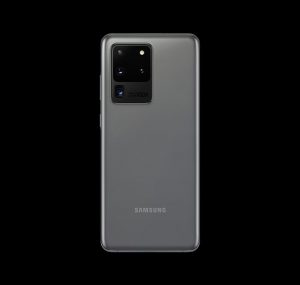The thing is, no other Android phone can stand up to the Samsung Galaxy S20 Ultra, look it in the eye, and genuinely claim that it can match it spec for spec. It is an almost brutal way to reset the benchmark. It will not be easy for the rivals to respond.

There is no other way of putting this. What we have here is possibly the first Android superphone. Everything about the Samsung Galaxy S20 Ultra, the hardware, the cameras and the experience of using it, is elevated when compared with even the very best flagship phones out there. The headline specs include the 108-megapixel camera with 100x zoom, a large 6.9-inch display that does 120Hz refresh rate and a massive 5,000mAh battery. In some parts of the world, you will get 5G as well. But it is not just the specs that come together well, but it has more to do with how the entire Galaxy S20 Ultra experience has been put together without really hurting the familiarity that carries forward from other Samsung Galaxy S20 series flagship Android phones, and indeed the flagships which preceded it.
There is more to the Samsung Galaxy S20 Ultra than simply being a technological evolution. We had noted this in our review of the Galaxy S20+ as well that it is the far-sightedness of Samsung as an organization is why they have been able to launch phones at a time when the Coronavirus, or COVID-19 pandemic has stalled pretty much every other smartphone makers’ plans. These are unprecedented times, and Samsung’s decision to spend heavily on developing Vietnam as another strong smartphone manufacturing hub, is paying dividends now. At this time when China is slowly limping back towards manufacturing normalcy after months of lockdown, they haven’t had to struggle as much as most of their rivals who are dependent on Chinese factories.
HOW MUCH DOES THIS SUPERPHONE COST?
Let us get this big question out of the way first. At present, Samsung is selling one variant of the Galaxy S20 Ultra in India, and that is priced at Rs 97,900. This is for the 12GB RAM and 128GB storage option (mind you, there is a memory card slot to add more), in the Cosmic Gray version. The 12GB + 256GB and 16GB + 512GB options should be going on sale sometime soon too.
SIZE MATTERS. REALLY, IT DOES
For starters, let us compare this with its sibling, the Samsung Galaxy S20+. In Samsung’s line-up over the years, there would always be a Plus, or + variant, which would sit at the very top step in terms of the screen size—the Samsung Galaxy Note 10 and the Galaxy Note 10+ or the Samsung Galaxy S10 and the Galaxy S10+, for the sake of illustrative examples. This time around, that mantle has been taken over by the Ultra, the Samsung Galaxy S20 Ultra. In fact, it is larger than the Galaxy S20+ (6.7-inch) and the Galaxy Note 10+ (6.8-inches). I love big screen phones—in fact, the bigger the better, and the Galaxy S20 Ultra is genuinely quite exciting to use.

We have to talk about how much space it will take in your trouser pocket or your handbag. This measures 166.9 mm x 76 mm x 8.8 mm in footprint and tips the scales at 222 grams. For perspective, the OnePlus 7T Pro checks in at 206 grams while the Apple iPhone 11 Pro Max holds up at 226 grams. In the era of genuinely big screen smartphones, weight will always be a bit of a tradeoff. That being said, balance the Galaxy S20 Ultra on two fingers and it holds up perfectly—that is a testament to the equal distribution of weight, even though one would have expected the large camera module on one side to be a bit more susceptible to the gravitational requirements.
You do need to be a bit more careful with the glass back though, because that can be a tad slick if you hold this with moist hands, for instance. Also, the big camera module at the back may just require you to take a bit more care to prevent it from getting scratches, particularly around the frame of that hump. And let us really not get into a debate about whether the layout of the cameras looks good or not—it does not matter. To be very honest, you hardly ever look at the back of your phone, so no reason to start worrying about how it looks now.
THE DISPLAY GETS THE 120HZ GOODNESS
The massive and immersive display of the Samsung Galaxy S20 Ultra is what visually sets it apart. The 6.9-inch screen is the Dynamic AMOLED 2X display. It is HDR10+ ready. The max resolution is 3,200 x 1,440 pixel and you get a full spectrum of features such as the blue light filter, the colour richness mode and the ability to bump down the screen resolution if you’d prefer that, for the sake of even better battery life.
The real reason why you may want to bring it down FHD+ (2,400 x 1,080 resolution) is to enjoy the 120Hz refresh rate. Scrolling is delightfully smooth and app transitions as well as Android animations look better than they have on any phone so far. Everything just looks like it is flowing though smoother—web browsing, flipping through files, scrolling through the WhatsApp chat list and so on. The only limitation is that this 120Hz refresh rate is not available for the highest QHD resolution, so you need to make a choice. But it is a trade-off that is absolutely worth it.
The Samsung Galaxy S20 Ultra has a slightly lower pixel density of 511ppi compared with the 525ppi on the Galaxy S20+, but that is just not noticeable in any form or manner. Colors in the Natural screen mode look nice and subdued, great if you are working on documents, browsing the web or even reading. Switch to the Vivid option, and everything just livens up ever so slightly, and that’s apt for Netflix and Amazon Prime Video streaming sessions.
MANY MANY MEGAPIXELS OF PHOTOGRAPHY GOODNESS
The aforementioned camera hump on the back of the Samsung Galaxy S20 Ultra is for a very good reason. Because within it is some serious photography prowess. What you get are four cameras—a 108-megapixel wide sensor, a 48-megapixel periscope sensor, a 12-megapixel ultrawide sensor and a ToF depth sensor. This is a massive leap forward in terms of what phones and cameras can do together. Zoom is perhaps what will really get you interested. You can start from the ultrawide 0.5x zoom all the way to 4x optical zoom and 10x hybrid zoom. This is where something called Space Zoom kicks in—that is all the way up to 100x. to be honest, handheld zoom wouldn’t really cut it after 30x, and you really need to either mount the phone on a tripod or prop it up somewhere safely to get any sort of expected detailing in these high zoom photos. But the very fact that it is possible in a smartphones simply would not have been believable a few years ago. I have to say that at 50x, the Samsung Galaxy S20 Ultra delivers better results than what Huawei managed with the P20 Pro last year—that in fact topped out at 50x zoom.

The Samsung Galaxy S20 Ultra shoots 12-megapixel photos by default, with the pixel binning method that pulls in data from individual sensors in clusters, the idea being to get more details in photos. If you scoff at the idea of having to see 12-megapixel size photos, you can switch to the 108-megapixel photography mode in the camera app. Yes, the image size itself is bigger which means it’ll also take up more space wherever you store it—that being said, some photos truly deserve that special treatment.
In the time I have had to test the Samsung Galaxy S20 Ultra, Samsung has released quick updates which have improved certain aspects of the camera performance. What started out as a very slow and inconsistent focus, has instead become better now. It is not only faster, but locks in better too. That being said, it is still not fast enough to properly focus on and capture a naughty toddler—those photos are blurry because of the movement and focus is mostly not on the moving subject. But like I said, it is better than before, and there is great hope that Samsung will iron this out in the coming set of software updates too. However, for those of you who may want to take simpler photos, the Samsung Galaxy S20 Ultra delivers sharp, colourful, dynamic and detailed photos.



